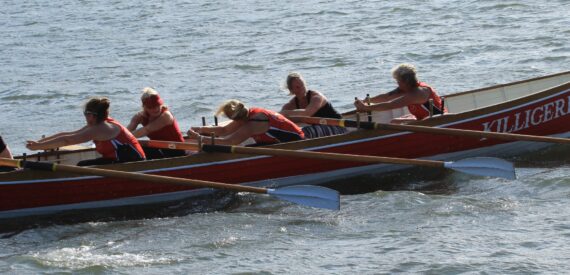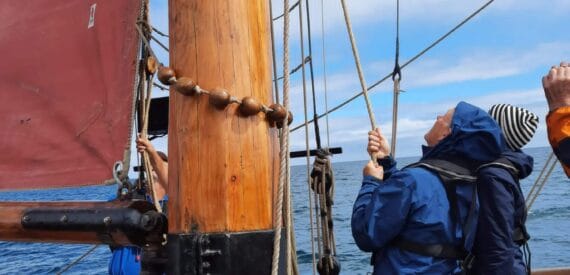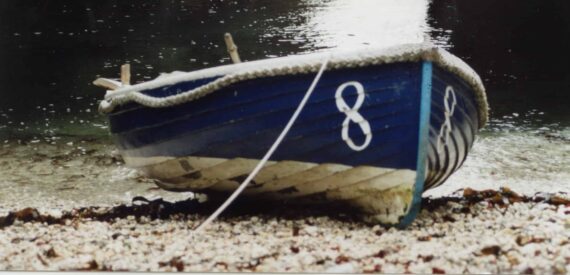What is Pilotage ?
Pilotage is navigating anywhere you can bump into things. If you are in sailing waters where it is shallow enough to run aground or you are near the coast, then you need to understand how to pilot your vessel. This is not just for potential yachtmasters’, as a day skipper going in and out of ports you will nearly always be in pilotage waters. Ocean sailors have it easy.
How To Write a Pilotage Plan
- Plan Before You Go
-
“Never go where your mind hasn’t been already”
Charts, pilot book photos, Almanacs, tidal stream atlases, local knowledge all help your paint a picture in your mind of an unknown port before you get there. This is the art of the navigator and part of the fun.
It is easy to get overwhelmed by the data available, but what you are trying to end up with, inside about 30 minutes, is a written pilotage plan that combines all your research before you set off.Creating a pilotage plan to come into an unknown harbour – Here is a possible structure for you to follow.
- Gather Primary Sources of information
- Creating a pilotage plan to come into an unknown harbour – Here is a possible structure for you to follow.
- DETAILED port chart
- DETAILED approach channel chart
- ALMANAC for tidal heights, tidal streams and port data
- PILOT BOOKS for photos and local knowledge
- WEATHER FORECAST is there going to be good shelter?
- Identify the hazards for your vessel
- Make sure you know the yacht draft and if your echo sounder is set on depth under the keel or total water depth. Now you can identify the hazards to your size vessel. Best source to use is the CHART and port details in the Almanac
- Ferries and commercial shipping
- Any narrow channels or prohibited areas for yachts
- Visible rocks Underwater rocks and shallows
- Get Familiar with Landmarks & Features
-
- Where is a good approach point before going in?
- How will I find the port along the coastline? (daymarks/ lighthouses)
- Will I be arriving in daylight or night?
- Can I use the big ship navigation buoys and leading marks?
- How big is the outer harbour or inner harbour? Topography – what hills or cliffs will give me shelter
- Tides
- There are several dimensions to this. Treat each as a separate topic. As a minimum you need to work out:
- Check what the offshore tidal stream will be doing as you approach your harbour (need an Estimated Time of Arrival ETA)
- Read Almanac for details on river currents inside the harbour or estuary ( HW and LW times).
- Is tide ebbing or flooding?
- DO TIDAL CURVE and work out TIDAL HEIGHTS for arrival.
- Any tidal restrictions e.g. to get over a sill or entrance bar.
- Find A Place for the night ? (PARKING !)
-
- ALMANAC or PILOT BOOK for details on marinas, visitors buoys or anchoring.
- Always have at least 2 options.
- Radio channel for harbourmaster or marina office
- Now Refine your Plan
- You have the bare bones so you have the key data in the log book you could now brief your crew and go, if you are confident you can fill in any gaps, en route. It depends how complicated the pilotage is going to be at the other end. If you have time to do the whole plan before you go, you can enjoy the sailing.
- Re check underwater hazards now you know tidal heights
- Box off danger areas with clearing bearings
- Draw on courses to steer on the chart in 2b pencil and circle any leading marks or transits you intend to use.
- Write courses to steer in compass course not TRUE
- All this is best done on the chart.
- Traditional and Electronic Aids
- Consider if entering GPS waypoints will help. Without a chart plotter, tapping in latitude and longitude to a GPS is laborious. In rough weather or strong tides with few visual landmarks to show your sideways (course over the ground) drift, it may be worth the hassell. Having a waypoint at the start of a leading line or transit into port will help orientate you. If you are coming into a wide estuary between rock plateaux or underwater sand banks then a series of waypoints will help you stay on a vital track in any cross tide until you can pick up visual transits and headmarks.
- Know Where You Can Sail
- In your pilotage plan it is much better to box off areas where you shouldn’t go, then everywhere else is potentially safe to sail in.
It gives you much more freedom than following GPS ‘tram lines’ between waypoints that take you down the middle of a big ship channel.
Plymouth is a good example. As long as you box off the hazards around Drakes Island and some rocky areas near the edges, the whole of Plymouth Sound is yours. No need to stay in the approach channel and get run down by the Navy.
You box off hazards with clearing bearings. e.g. As long as the bearing to Port Buoy no.4 is less than 200 degrees, the boat is safe Etc – then you can tack upto that imaginary line.
- Put weather into the equation
-
- Decide best places to take sails down.
- Where are the dangerous lee shores.
- Any wind over tide problems
- Where in the harbour is the best shelter
- Virtual Reality Sailing
- Imagine travelling your Route in to test it. Visualise the landscape at LW. What sand banks will I see at 17.30hrs ?. Where do I Write it Down ?
Your pilotage plan might be written in the logbook, on the chart in pencil or on a diagramatic sketch or note book….but it needs to be written down (by law actually – even for leisure sailors).
I would draw courses and note danger areas on the main chart, then I keep plain thin paper to quickly trace the chart and make a copy I can take on deck – with just the key information. Stick it to a clipboard and do it in pencil then it is rain and wind proof, plus you have the real chart as a back up. Tidal info I write daily in the logbook.
- Brief your Crew
- Before you set off, explain your navigational plan to the crew. Even if you have a mate, it will help keep everyone alert and interested.
Now if you set off and get clobbered by the boom, your crew might have some idea how to get you safely into port.
Now to show off your pilotage skills with confidence, read our free PDF on How to Implement a Pilotage Plan
Too Complicated Already ?
If you are starting from scratch and want to learn basic navigation, charts, plotting positions and courses to steer, then an evening class is one option…or you can learn at home with a RYA online course. Get going right now with:
Essential Navigation and Seamanship – basic theory online course
RYA Day Skipper Theory – Intermediate Theory – online course
Practical Training at Sea
Come and practice at sea on Moosk or Golden Vanity with our RYA sailing instructors to help you. On a Competent Crew Course, we will introduce you to charts and navigation, even though it is not in the syllabus. On a Day Skipper course we can take you through this in bite size chunks, until you are putting the whole thing together and skippering on short passages yourself. On a Yachtmaster Prep course, we speed the whole thing up and do more night and blind (fog) pilotage to hone your skills.
Debbies Top Pilotage Tips
Debbie Purser is the RYA Principal of Classic Sailing School and has seen many ways of teaching navigation – both at sea and in the classroom. She has learnt fast pilotage at 22 knots in the Royal Navy reserve, taught young people on sail training yachts, trained as a deck officer for larger vessels using radar and chart plotters for pilotage. For the last 18 years Debbie has skippered charter boat Eve of St Mawes with 5-6 guest crew and her ‘weapon of choice’ for pilotage is still the hand bearing compass and an Admiralty chart.





